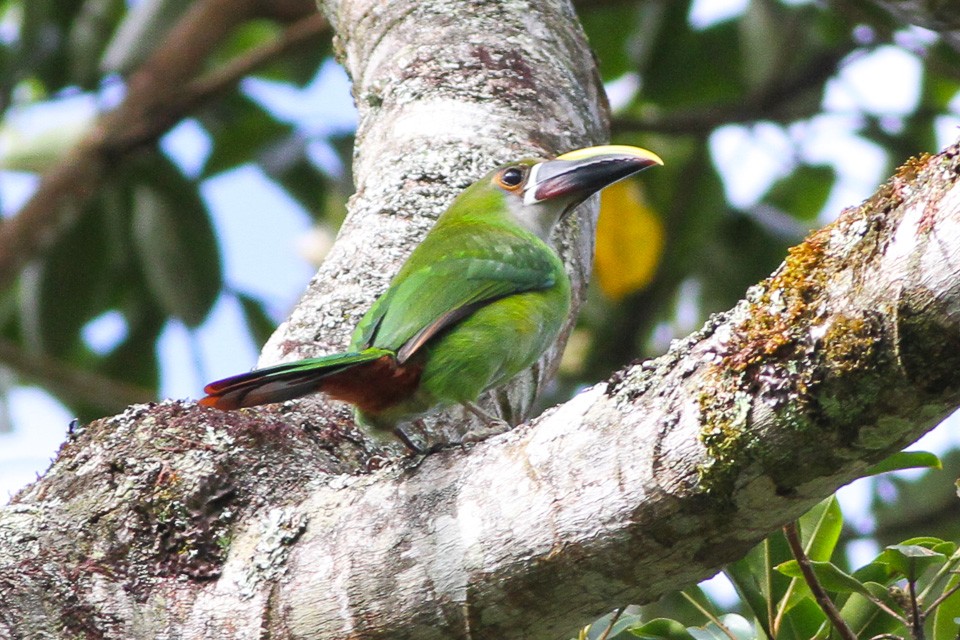Northern Emerald-toucanet
A species of Emerald Toucanets and Allies Scientific name : Aulacorhynchus prasinus Genus : Emerald Toucanets and Allies
Northern Emerald-toucanet, A species of Emerald Toucanets and Allies
Botanical name: Aulacorhynchus prasinus
Genus: Emerald Toucanets and Allies
Content
Description People often ask General Info
Description
Like other toucans, the emerald toucanet is brightly marked and has a large bill. The adult is 30–35 cm (12–14 in) long and weight can range from 118–230 g (4.2–8.1 oz). The sexes are alike in appearance, although the female generally is smaller and slightly shorter-billed. It is, as other members of the genus Aulacorhynchus, mainly green. The vent and tail-tip are rufous. The bill is black with yellow to the upper mandible (amount depends on the exact subspecies) and, in all except the nominate (prasinus) and wagleri groups (see Taxonomy), a white band at the base of the bill. The members of the caeruleogularis group have a rufous patch near the base of the upper mandible, while some members of the albivitta group have a rufous patch near the base of the lower mandible. The throat is white in the nominate and the wagleri group, blue in the caeruleogularis and cognatus group, pale grey-blue in the lautus group, blue or black in the atrogularis group, and white or grey-blue in the albivitta group. The eye-ring ranges from blue to red, in some subspecies very dark, almost appearing blackish from a distance. The legs are dull greyish and the iris is dark. Juveniles are duller, including the throat, and, depending on subspecies, the black areas of the bill are replaced with dusky or the bill is entirely yellowish. The calls of the emerald toucanet are a loud dry rrip rrip rrip rrip rrip and a graval graval graval. It has been suggested that the two different calls are given by the two sexes. There are also croaking alarm and aggression calls. 
Size
37 cm
Colors
Brown
Black
Green
Yellow
Blue
Life Expectancy
10-14 years
Nest Placement
Cavity
Feeding Habits
Northern Emerald-toucanet consumes fruits, invertebrates, and small vertebrates, along with occasional flowers. They forage in trees, deftly using their bill to explore crevices. Nestlings primarily eat arthropods. Northern Emerald-toucanet's diet reflects their ecological adaptability.
Habitat
Northern Emerald-toucanet typically resides in humid montane forests, frequenting areas where the forest edge merges with secondary growth. This species is adaptable and can also be found in agricultural plantations and forest clearings punctuated with trees. Their preference for elevated terrain spans across several highland regions in the neotropics.
Dite type
Frugivorous
People often ask
General Info
Feeding Habits
Bird food type

Fruit
Behavior
Small flocks, usually consisting of 5–10 birds, move through the forest in "follow-my-leader" style with a direct and rapid flight. 
Distribution Area
The emerald toucanet is a generally common in humid forest and woodland, mainly at higher elevations. 
Species Status
Not globally threatened.
